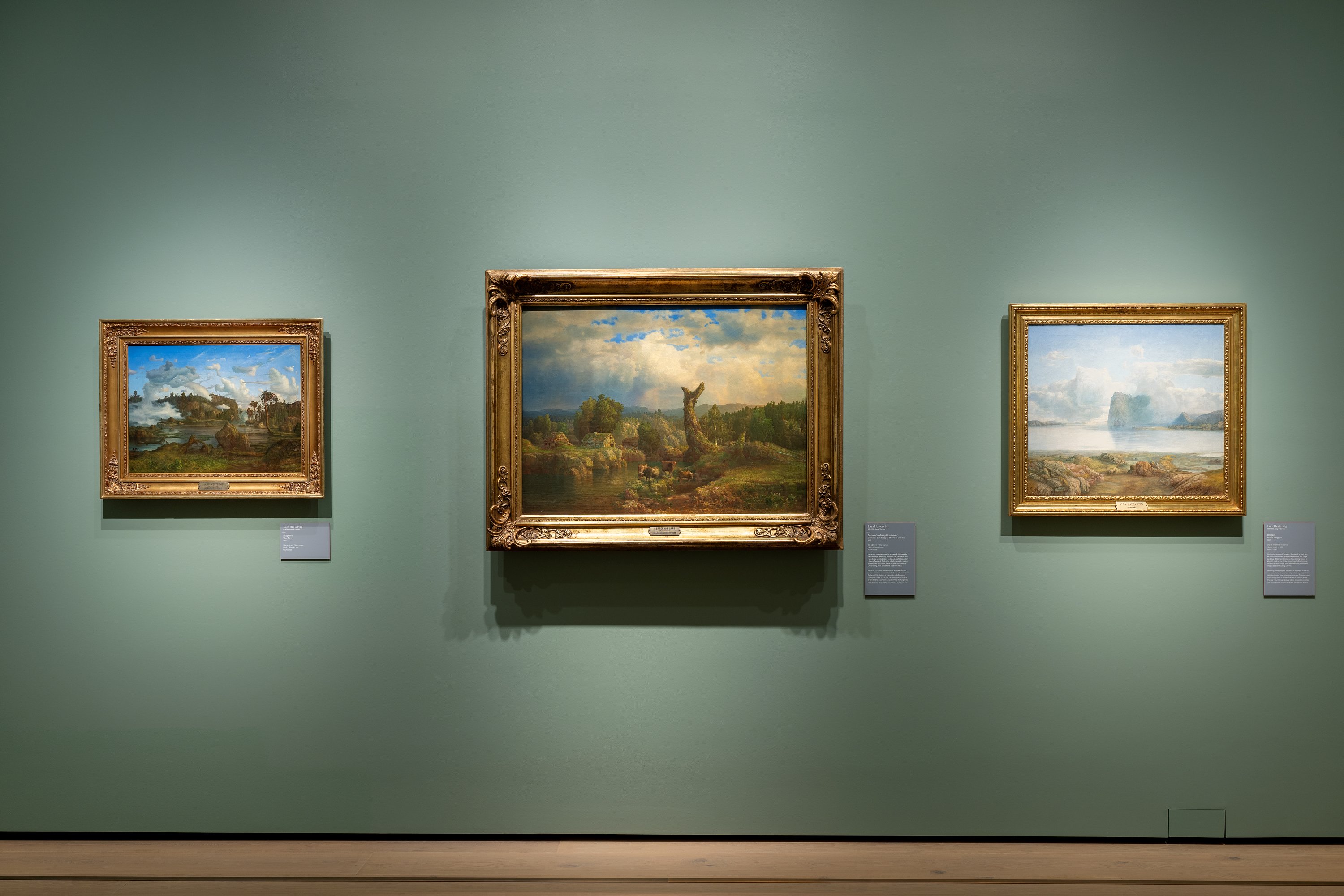Lars Hertervig

Transcription
Narrator:
Holger Koefoed is an art historian and the author of several books about Lars Hertervig.
He explains that the gifted young artist received a scholarship to study art in Düsseldorf, and that unlike others at that time, he was different because he came from a poor family.
Holger Koefoed:
…And I think that was a problem in Düsseldorf… he was of a different social status than the other middle-class sons who were there. They were confident and successful in other ways, but he just swept them aside with his abilities!
Narrator:
His mental health forced him to interrupt his studies and return home to a life as an isolated artist.
At home in Stavanger, he painted "Summer landscape, Thunder Looms".
Holger Koefoed:
Perhaps you can see, that in the picture here… that there is a lot of drama with the storm coming in, and what happens to colors and animals and people in that scenario. Also, the tree trunk that stands up like a kind of hand towards the brightest point in the sky…
Narrator:
The light is the key.
Koefoed has looked at how his family's connection to the Quakers - a religious minority concerned with austerity, vocation, and the inner light - affects his art.
Holger Koefoed:
So, for a Quaker, having a vocation as an artist would mean that the vocation is something that has become a kind of inner agreement between you, i.e. your inner light, and the deity. And such a calling was actually quite sacred in the religious community in which he grew up.
Narrator:
The Quaker movement's ideas are particularly visible in the picture "The Tarn", says Koefoed.
Holger Koefoed:
Then, we get another kind of contradiction, namely between the primeval landscape, which is rather melancholy and heavy, but with these clouds and the fog, which seems to dissolve right in front of us. It is precisely the religious belief of the spiritual, that we see here, and not just the contradictions and drama in the landscape. So, important things happen here.
Narrator:
And then you have the masterpiece "Island Borgøya":
Holger Koefoed:
Borgøya, perhaps to an extreme degree, illuminates his religious dimension as a landscape painter. It emphasizes precisely what was important to the Quakers, and with whom he lived in close contact for almost his entire life.
They emphasized that a landscape painting should not be realistic. It should not compete with the creator. There was no point in it trying to. But you had to emphasize the spiritual dimensions of the image, and that it had to be very personal. Your perception of the landscape, not a correct photographic representation, and you had to emphasize the light, the sky, and the reflection of the sky. So, the entire image is almost a kind of luminous surface. The clouds are also incredibly important, and that the landscape grows out of the clouds, so to speak. And so, seeing this from a Quaker point of view and a religious point of view within landscape painting, this is precisely to emphasize the spiritual, and that was the point of this branch within religious landscape painting.